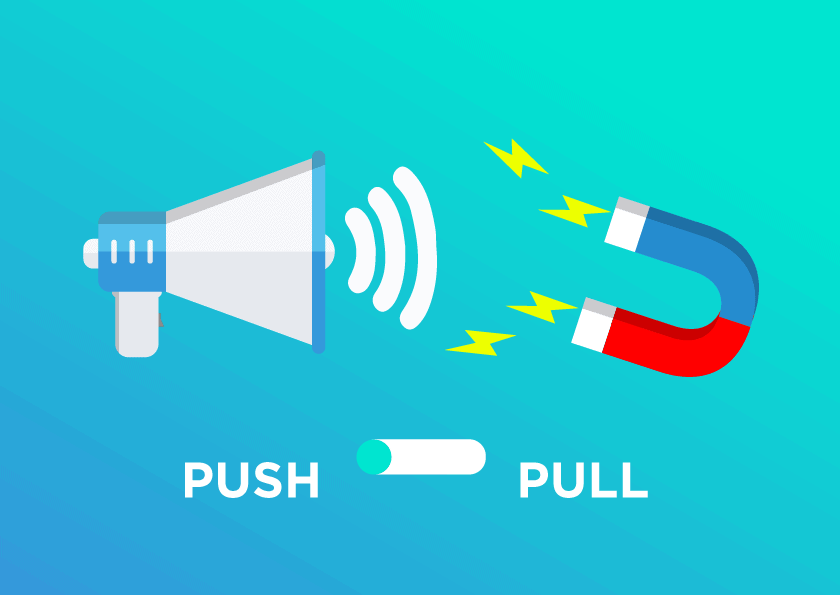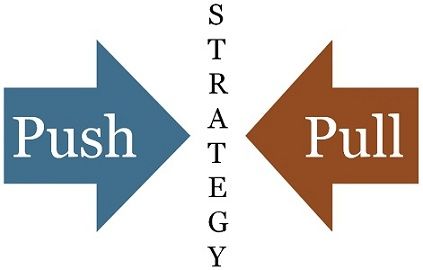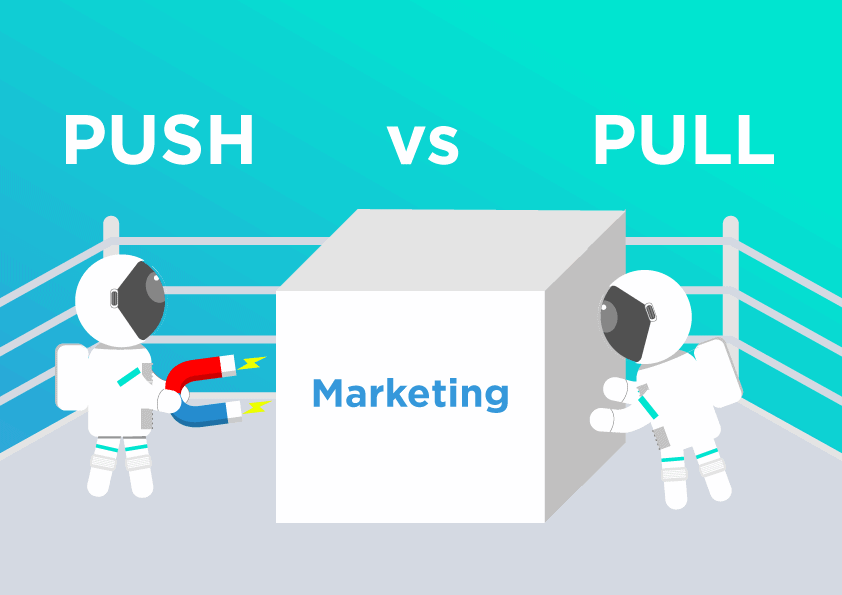
How Push and Pull Marketing Strategies Differ?
Push and Pull Marketing
Push and pull marketing are the two core principles for guiding your marketing strategy. Before choosing which of the marketing strategies to go for, you have to identify what the long-term and short-term goals of your business are.
The Difference Between Push and Pull Marketing
Push Marketing
In push marketing the goal is to bring your digital brand or products to your customers. This form of marketing is a lot more deliberate and proactive than other inbound methods. Because push marketing is a bit more aggressive then the alternative it’s generally preferred by businesses taking advantage of a short time-period or trying to generate sales quickly.
Instances where push marketing can be helpful include:
- When launching a new business or website without a reputation
- When releasing new products
- During holidays, or seasonal events
- For sales and temporary promotional campaigns
- When expanding to a new niche
- To generate cash-flow or sales quickly
- To help clear out product stock before the end of a season
- To help promote brand recognition when competing against a dominant competitor
- Just in general, when trying to subsidize a multi-channel strategy
Pull Marketing
Pull marketing, on the other hand, involves naturally accruing traffic. The reasoning here is to create high-value content suited for your target audiences and letting them come to you. Of course this doesn’t mean doing nothing. Pull marketing simply means being aware of the fact that there are already users actively seeking out the products, services, or information that you offer and making it easier for them to find it, and making it easier for them to get to their ultimate goal.
Pull marketing is often the primary business digital strategy for companies looking to:
- Ensure long-term business growth
- Maintain dominance in a specific niche or industry
- Build a return customer base or improve loyalty
- To promote brand recognition with customer engagement and visibility
- Increase social media traffic as well as social media sharing
- Grow traffic to their site across organic, referral, and social segments
- Improve sales and revenue affordably, without an expensive ad budget
- Engage with customers before they know what they want, at the top of their shopping funnel
3 Examples of Push Marketing
- Direct marketing outreach: After identifying which demographics to target, push marketers might send information about new products to them via direct mail, email, or direct message (DM). The user might have no idea the brand even exists until this initial contact, suggesting this strategy might work best for up-and-coming companies.
- Paid search ads: In the digital marketing age, companies often use paid search ads as part of a broader push marketing strategy. These ads appear at the top of a person’s search for related products. The goal is for these sorts of ads to garner a high conversion rate. Businesses can work with search companies themselves to settle on a payment arrangement for these ads—a pay-per-click (PPC) method is particularly common.
- TV commercials: Once a company decides on a specific audience, they can advertise during a show that high numbers of people in the same demographic watch regularly. This enables companies to cast a wide net while still directly targeting an audience and pushing their wares in front of them.
3 Examples of Pull Marketing
- Customer reviews: Suppose you run a search in an online app store for a specific kind of software. As you scroll through your download options, you’re likely to gravitate toward the ones with the highest number of positive reviews. This shows the company builds positive customer relationships and pulls you in via digital word-of-mouth referrals. Behind the scenes, companies might provide incentives for consumers to leave positive reviews because they know how much they influence potential customers.
- Search engine optimization: A content marketing technique, search engine optimization (SEO) involves building web pages containing keywords and phrases that will ensure a company shows up earlier in someone’s search results. Climbing SEO rankings in this manner helps get your company in front of consumers organically.
- Social media engagement: Cultivating an effective social media marketing strategy is one way to increase brand awareness through pull marketing. When people share your content, they act as free distributors of your advertising as well as word-of-mouth referrals to everyone in their network. In a sense, you pull in these initial users through social media marketing so they can push out your content free of charge.


